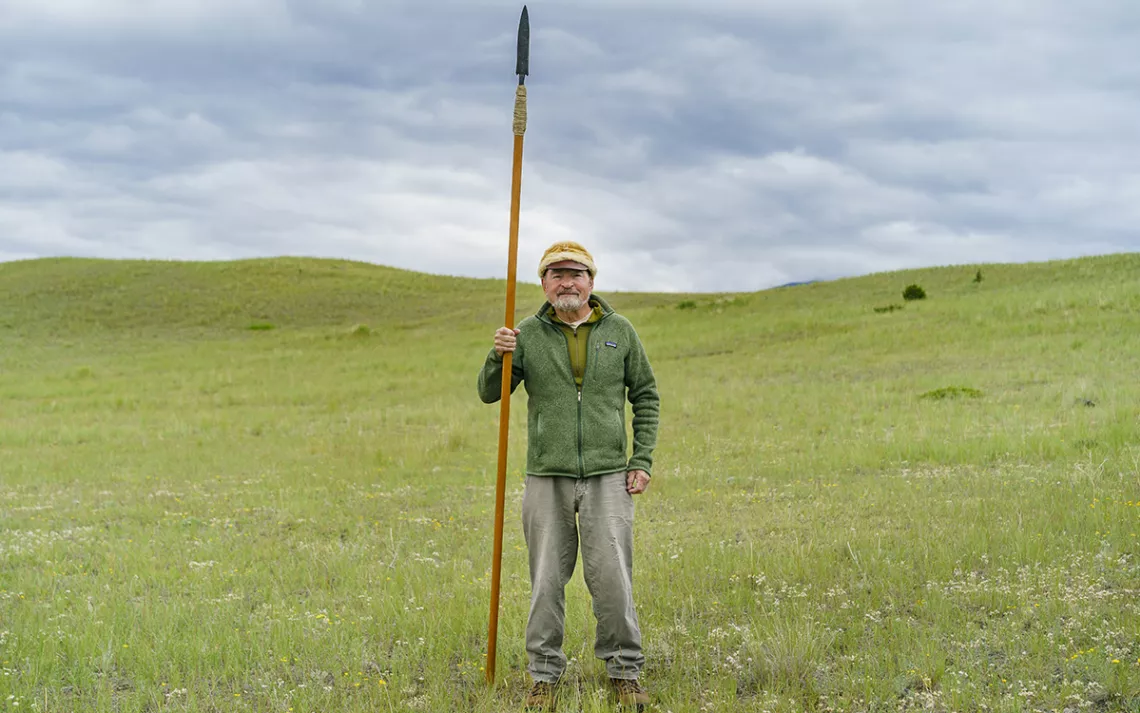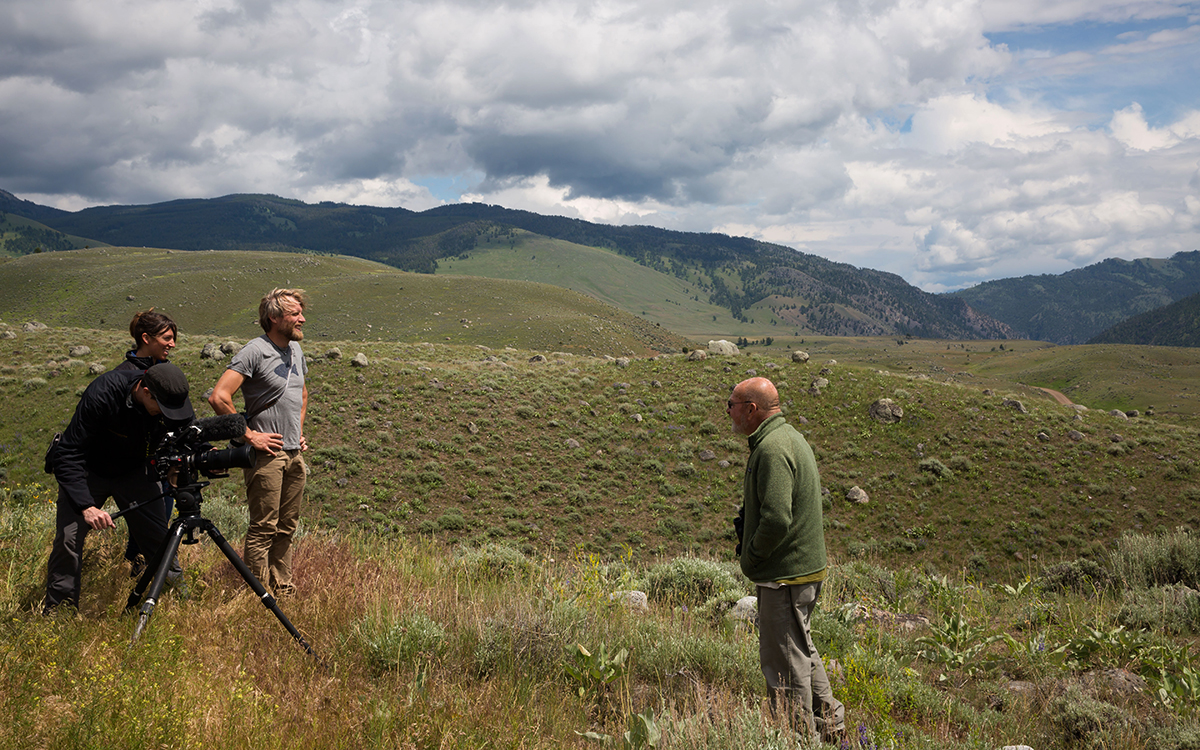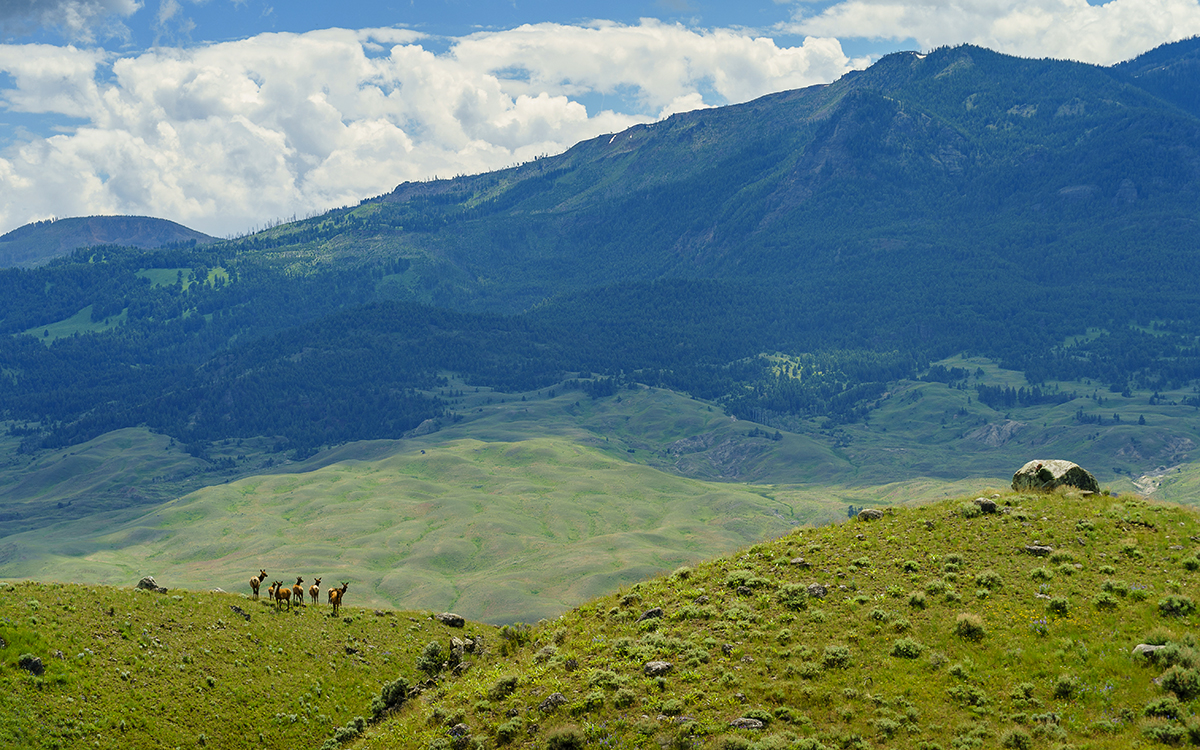"Grizzly Country": On Doug Peacock, Bears, and Enforced Humility
A new short film about the activist and writer

Photos courtesy of Doug Peacock
Here’s environmental advocate and writer Doug Peacock describing an encounter with a grizzly bear (it was the last time he’d carry a gun as protection against a bear attack): “I lowered the pistol. The giant bear flicked his ears and looked off to the side. I felt something pass between us. I didn’t know that the force of that encounter would shape my life for decades to come.”
Grizzly Country, a 12-minute short film by Ben Moon now being aired across the country, opens with Peacock’s account of this formative event. The film follows Peacock’s lifelong devotion to grizzlies and his overlapping evolution as an activist. “Doug is a legendary figure,” says Moon. “Some people think of environmentalism in pre- and post-Doug terms. He's the old guard of environmental activism, and we wanted to preserve some of his wisdom and experience for the next generation.”
Peacock’s embrace of the bears coincided with his departure from violence. He was drafted to serve two tours in Vietnam as a Green Beret medic, where he witnessed the carnage of the Tet Offensive and “too many dead children.” Peacock returned from the war and was overcome with depression and existential nausea.
As so often occurs, not least in myth and religion, immersion in wilderness provided not only a measure of spiritual salvation but also enlightenment. Growing fascinated with grizzlies, Peacock took a series of low-level jobs with the National Park Service, which enabled him to devote the next 15 years to filming and studying bears. The film shows young Peacock schlepping weighty, metallic cameras on his shoulder like M-16s, musing: “It was kind of like warfare, pitching invisible camps, leaving no tracks.”
Later, Peacock would say that grizzlies saved his life. But the theme in the film—that wilderness can cure the ills of a species isolated from its own nature—doesn’t end at calm reverence. Peacock has vociferously criticized the modern environmental movement for being far too passive and conciliatory. As an activist, he fit into the militant and outraged camp—fitting, given that he’s probably best known as the model for Hayduke, the protagonist in Edward Abbey’s iconic novel The Monkey Wrench Gang.


In the cult classic, a misanthropic ex–Green Beret battles destructive industries by going on a gleeful sabotage spree, in an effort to slow the feverish transition of wild spaces into parking lots and strip malls. Hayduke—and Abbey’s brand of activism more broadly—brought militancy to the environmental movement in the mid-1970s. By his own admission, Peacock’s two-decade friendship with Abbey was complex and fraught, but it was anchored in both a love for, and forceful defense of, nature. In Outside Magazine in 1997, Peacock described burying Abbey in an unmarked grave in the desert, in accordance with his friend’s final wishes, as buzzards circled overhead. That such burials are illegal exemplifies what both men might view as society’s disjunction from nature—and from life’s most bedrock ending.
In Moon’s film, Peacock laments this disjunction. In past interviews, he’s spoken on the forgotten “mingled fate of man and bear.” Mirroring Native American beliefs, Peacock calls wilderness the mother of all things, the source of our intelligence, growth, wisdom—and also our best shot at salvation. Environmental historian William Cronon called wilderness a construct that separates humanity from the systems that sustain it, and this false dichotomy comes to mind when watching the film. “A culture like ours, we fear what we don’t know, and we really hate what we fear,” says Peacock. “To know the bear, to know the unknown. . . . It approaches that quality of wildness that lives in all of us.” What grizzlies do for people, he says, is to instill in them an “enforced humility.”
In Peacock’s devotion to grizzlies, the film reminds viewers of the age-old adage: While no one can do everything, everyone can do something. Of his singularity of purpose, and his focus on grizzly habitat, Peacock has said that such work is the “most satisfying expression of joy that I know.” And while his and other activists’ efforts have certainly born fruit, the struggle for grizzlies and wild spaces seems endless. The Trump administration has recently moved to remove the bear’s endangered-species status, and congressional Republicans threaten to undermine the Endangered Species Act altogether. Moon says that it’s a particularly difficult time for environmentalists, but he hopes the film inspires people to fight for those causes they care about.
“The grizzly bear, on this continent, is the one animal capable of reminding the most arrogant species on Earth its true place in the world,” says Peacock. “Without our arrogance and our firearms and our dominion, we’re just another flavor of meat.”
 The Magazine of The Sierra Club
The Magazine of The Sierra Club



